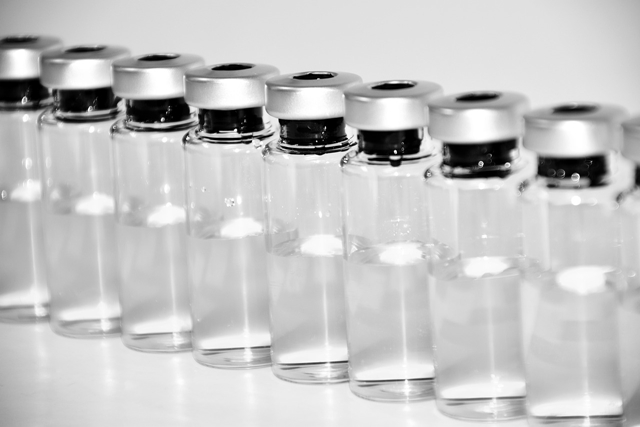– Sponsored content –
13 Oct. 2023. In 2009, Dysport (abobotulinumtoxinA) was introduced to the US market as an alternative to Botox. Both Dysport and Botox are botulinum toxin-based treatments, primarily indicated for wrinkle reduction and specific movement disorders such as spasticity and cervical dystonia. However, they are derived through unique, proprietary manufacturing processes. Dysport and Botox have different therapeutic effects, including how long they last, how they spread, their side effects, and strength. In this article, we’ll take a look at these differences.
What is Botox?
Botox (onabotulinumtoxinA) is predominantly recognized as a cosmetic treatment for wrinkles, especially glabellar lines. Beyond its aesthetic applications, Botox functions as a neurotoxin, disrupting chemical communication in cholinergic neurons and affecting signal transmission between these nerve cells and their targets. This action underpins Botox’s broader therapeutic utility.
For example, Botox is employed in managing several neuromuscular disorders, including cervical dystonia (involuntary muscle contractions in the neck ) and blepharospasm (eyelid twitch). Moreover, it has shown promise in treating pain-related conditions such as chronic migraines and urological disorders like overactive bladder. Botox offers significant therapeutic advantages to patients across a diverse range of neurological conditions.
Dysport and Botox: Both Derived from Botulinum Toxin
In 2009, Dysport (abobotulinumtoxinA) was launched in the US as a counterpart to Botox. Both these treatments have their foundation in botulinum toxin and are primarily prescribed for wrinkle reduction, as well as specific movement disorders including spasticity and cervical dystonia. Yet, they originate from distinct, proprietary production methods. Dysport and Botox have different therapeutic effects, including how long they last, how they spread, their side effects, and strength.
Botox (onabotulinumtoxinA), while widely known for its cosmetic use in addressing wrinkles, particularly glabellar lines (frown lines), has more expansive therapeutic implications.
It acts as a neurotoxin, interrupting chemical signaling in cholinergic neurons, thus influencing signal relay between these neurons and their respective targets. Such activity forms the basis for Botox’s extended therapeutic applications.
Additionally, its potential in managing pain-related conditions like chronic migraines and urological concerns such as an overactive bladder has been recognized. In summary, Botox presents a wide spectrum of therapeutic benefits for numerous neurological conditions.
Comparative Dosing between Botox and Dysport
The body of clinical research underscores a significant point: Botox and Dysport are not bioequivalent. Specifically, a unit of Botox doesn’t equate to a unit of Dysport in terms of bioactivity.
Numerous studies have sought to understand the clinical equivalence of these two formulations for different applications. Generally, the Dysport-Botox ratios employed in these studies have ranged from 3:1 to 6:1, yielding comparably effective outcomes for patients. However, the exact dose equivalency between these botulinum toxin preparations remains an active topic of research and debate.
One research focusing on the doses applied for cervical dystonia and blepharospasm found that the Dysport to Botox ratios in clinical practice varied from a minimum of 2:1 to a maximum of 11:1.
Notably, 31% of participants were dosed at a Dysport-to-Botox ratio of 5:1 to just under 6:1. Meanwhile, 30% were dosed at a 4:1 to just under 5:1 ratio, and 21% had a dose ratio from 3:1 to just under 4:1. This data suggests that the medical community has yet to converge on a universally accepted conversion ratio that yields consistent results, implying the absence of a straightforward conversion factor.
Dysport’s Diffusibility
There are also observable differences in the physical properties of these neurotoxins. Dysport, as many practitioners have observed, has a propensity to diffuse or spread more readily than Botox. Studies, such as the one conducted by Ranoux et al., highlighted an increased side effect profile with Dysport. The authors hypothesized that this might be tied to Dysport’s higher diffusion rate compared to Botox. This was supported by findings from Nü?gens and Roggenkämper, where Dysport showcased an elevated adverse event profile, particularly a notable rise in ptosis incidents.
Further analysis by de Almeida and de Boulle, after reviewing multiple studies on the diffusion characteristics of these neurotoxins, reinforced that Botox tends to diffuse less than Dysport.
The diffusibility factor has both benefits and drawbacks, contingent on the application. For instance, the greater diffusion rate of Dysport might be favored for treatments over larger areas, such as in male patients or broader forehead treatments, while Botox is often preferred where precision is paramount.
Conclusion
In summary, direct comparisons between Botox and Dysport in clinical trials reveal marked differences in their composition. These disparities manifest in several ways, including in diffusibility, potency, side effect profiles, and duration of effect. It is essential for aesthetic practitioners to remain aware of the non-bioequivalency of these formulations and to exercise caution against direct dose conversions.
* * *


 RSS - Posts
RSS - Posts
You must be logged in to post a comment.